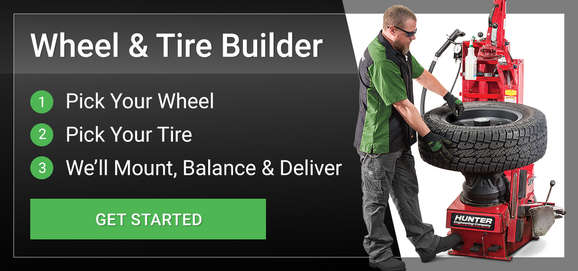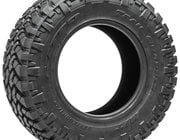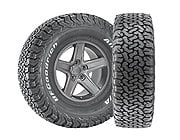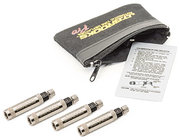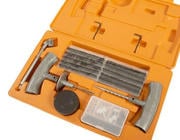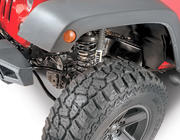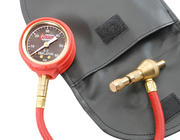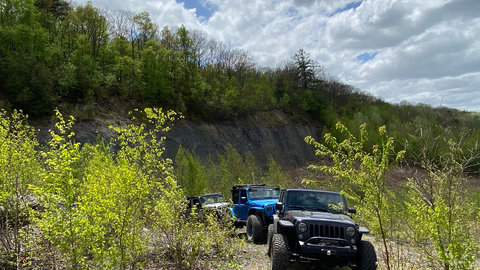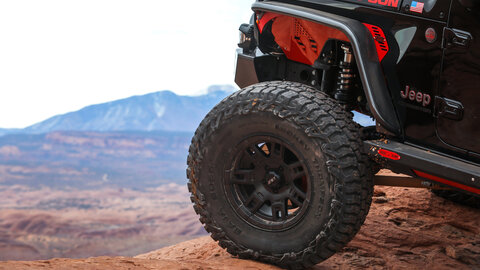Jeep Tires & Tire Covers
With so many different styles, numbers and letters marking them up these days, choosing the best Jeep tire can be a bit of a challenge. And if you are not sure what you want or need, then things can get even more confusing pretty quickly. Are all-terrain tires the best for your Jeep, or perhaps mud-terrain? What about tread patterns and tire size? Will any tire fit your Jeep's wheels, or are different ones required as well as a body lift or suspension lift kit?
Yes, changing or upgrading tires can be quite a daunting task. So, to start, you really need to decide how you plan to use your Jeep. Is it a daily driver with limited off-road exposure? Or is it mainly an off-pavement adventurer? Perhaps a mix of both? If you are more of a daily driver with some off-road use, then perhaps look for tires that perform well at high speed, while also giving above-average performance in moderate trail conditions - in other words, an All-Terrain tire. These tires are typically quiet and perform well around town and the highway, but still have enough aggressive tread to tackle modest types of trails. These types of tires also have good tread life and can usually get 40-60K miles before they need replacement.
Mud terrain tires are primarily designed to get your Jeep through mud, over rocks, or past may other types of off-road obstacles. These tires use a softer rubber compound, allowing the treads to dig into the ground and propel forward easier than all-terrain versions. Plus, the treads have wider gaps, allowing the tire to 'grab' mud, snow or other debris and push them out of the way. Mud terrain tires also have a stronger sidewall than other tires, which helps prevent punctures or tears when the tire is up against rocks. While you can definitely use mud terrain tires on the pavement, they are louder than other tires and their soft construction makes for a faster wear. They also reduce your vehicle's fuel efficiency.
Once you decide what type of tire fits your needs, choosing the correct size is just as important as not all tire sizes will fit - especially if you are upgrading size. But if you are just replacing your current tires, the easiest way to verify what you have is to check the tire sidewall. For example, on a 2015 Jeep Wrangler Sport, the tire may read P225/75R16. The 'P' stands for passenger tire, but this may also read LT (for light truck) on some tires. The 225 is that tire's width in millimeters, and the 75 is the tire aspect ratio - a relationship between the sidewall height to width. The R (for radial) should always be standard on just about every tire, however some may list 'B' for bias meaning the tire's body cords run diagonally across the tire instead of radically. Bias tires are designed for off-road only use and can be dangerous if used on pavement because of their construction. Finally, the 16 indicates the tire's diameter, so this particular example means it fits a 16" wheel. Also, some tire manufacturers list their tires in inch measurements instead of metric, so here is a handy conversion chart.
Finally, if you are looking to improve your vehicle's off-road capability, or give it a more rugged look, then larger tires, more aggressive tires, are certainly on your list. However, in doing so, you probably will need a suspension or body lift to accommodate the larger tires. You may also need to change wheels as well because your vehicle's current wheel size may not have the offset or backspacing needed for fitment. Use our handy tire fitment guide for further information.
Related Articles- December 12, 2024
- November 18, 2024
- 12 min read
- November 14, 2024
- 10 min read














